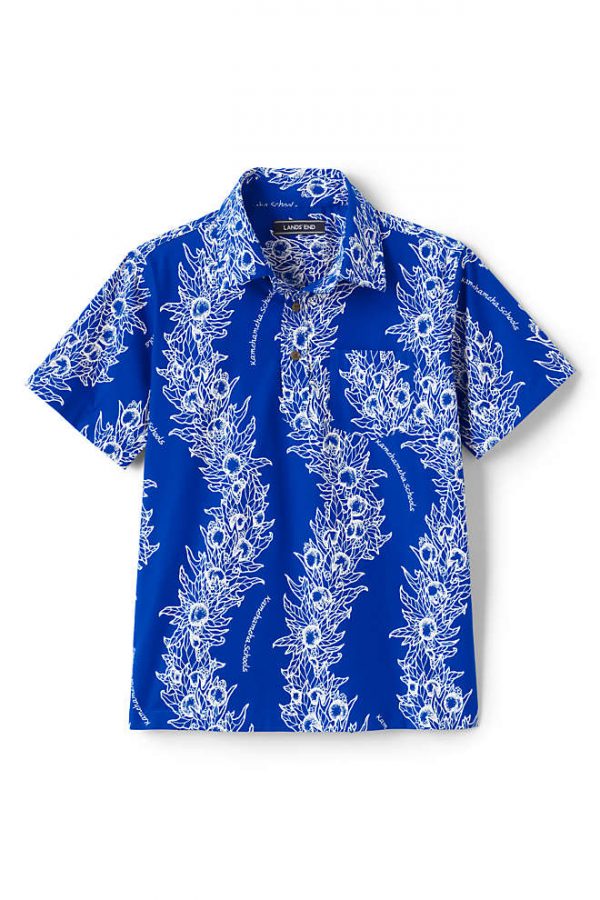A More Inclusive Future For Kamehameha
The line between what’s “masculine” and what’s “feminine” is continuously getting blurrier. It is time that we start to make change.
The line between what’s “masculine” and what’s “feminine” is continuously getting blurrier. Because of my generation’s rapid acceptance of all peoples, our society has changed greatly. One aspect that has seen more change in recent years is the abandonment of old gender norms, including what traditional genders are “meant” to wear.
In our ever-changing society, “cross-dressing,” or wearing clothes not made for your gender,—and I use this word because it is the way our school titles people wearing the clothes of the opposite sex—has become increasingly more visible. We see some of the biggest celebrities defying the lines of gender norms more recently than ever. Those like Harry Styles, who recently appeared in a photoshoot wearing a dress, and Zendaya, who walked the red carpet in a men’s suit, are changing how people see clothes. Though the abandonment of old gender norms is one aspect to consider when discussing changing our dress code, we also need to consider that many wear clothes that aren’t “normal” for the gender they were born as, because it reflects the gender they feel they truly are.
Senior Keliko Fujimori, who feels strongly about this issue said, “Those who “cross-dress,” myself included…dress in the way we feel most confident and comfortable in.”
Changing our dress code to be gender-neutral, allowing men to wear women’s clothes and vice versa, would make our school a step closer to a more inclusive environment and a safe space for students all across the LGBT+ spectrum to express themselves as the gender they believe they are. It would make our campus a place where students can be open and honest with not only themselves but with others.
Fujimori continued on to say, ʻ“Cross-dressing” allows people like myself to feel empowered and appreciated when we dress what we feel like.”
The outdated notion that we should dress in the clothes “meant” for the gender we were born as is hurting our students. We are suppressing their true selves, and at a time when multiracial transgender attempted suicide rates are thirty-four times higher than the national average, the dress code may no longer be a discussion of inclusivity, but one about the mental health of our students.
When speaking about how she felt about our current dress code, Fujimori said, “restricting the ability to share my inner self is a feeling one can only find in the loss of a loved one.”
As teenagers, our identity is something we are constantly questioning. Our years in high school is a time for questions though, for figuring out who we are. Our school should be a place that nurtures our questions and allows us to openly share our identity when we finally figure it out. We’ve seen our school make great strides through the changing of our prom dress code, but I believe that we need to keep moving forward and change our everyday dress code as well.
Obviously, the change in dress code presents a number of problems. Concerns that other’s may pervert the gender-neutral dress code to bully those who aren’t dressing within the norms are extremely valid. However, our school is a place of acceptance, and the chance that our boys would wear a dress simply to create a hostile environment doesn’t feel realistic. Our recent pep rally is a prime example. As Keliko strutted down the gym in a wig and stilettoes with other students in similar attire, the crowd erupted in cheers, screams of “yes queens” could be heard throughout the Junior section I sat in, and not a boo or ridicule could be heard. I like to believe our students reflect the better variety of our generation; the type who would protest in the streets for equality, the type who would cause an uproar over decisions that have pushed for less, who accept and encourage a diverse and safe place for all walks of life to live. The belief that our students would be capable of making our school a place where those like Keliko would feel unwelcome or bullied isn’t one that I hold, and I would hope that our administrators wouldn’t either.
Even if, on the off chance, students do pervert a gender-neutral dress code to bully other students, Fujimori ended our interview addressing this issue. The senior said, “as a “cross-dresser,” you must understand that no matter what you do, people will nit-pick you, [but] I must not let that affect me. [Wearing women’s clothes], for me, is a chance to show my true self…and I don’t need people’s opinions to uplift me or tear me down.”

EMAIL: [email protected]
Hi! My name is Taylor Cozloff, I'm from Wahiawa and Ahuimanu, I'm a senior, this is my third year on staff, and my second as Editor in Chief. I enjoy traveling, reading, writing, and outrigger canoe paddling. This is sadly my last year on staff, but I will be continuing my life in the journalism world when I study journalism in college and, hopefully, make it my career. I am incredibly passionate about social justice, equality, and the environment, so you'll probably see a myriad of articles about these subjects with my name in the byline. Ka Moi is for the students, by the students, so if you wish to submit an editorial about problems you see in our school, community, or in the world, feel free to email me any time.


